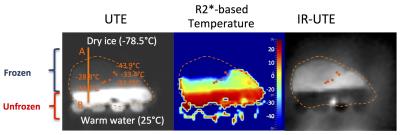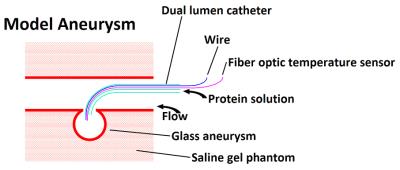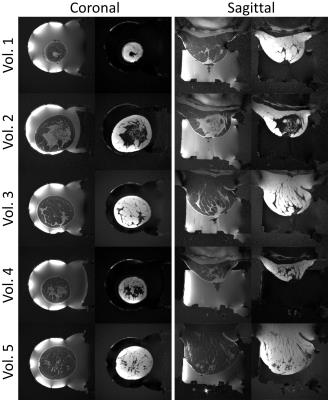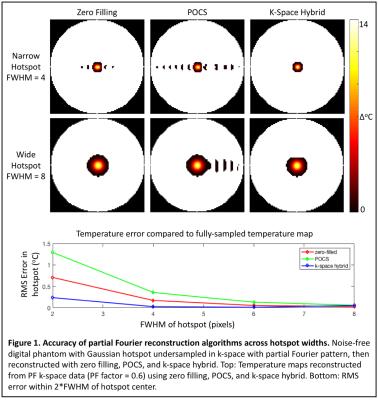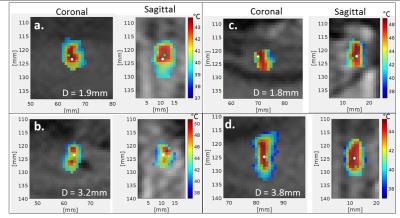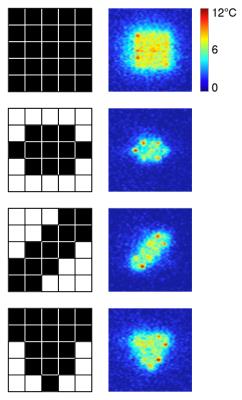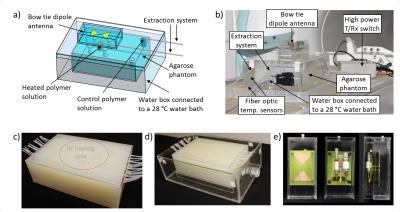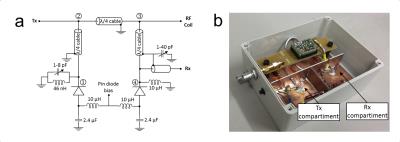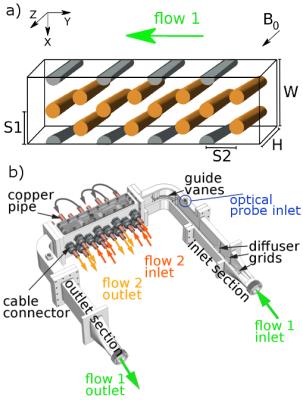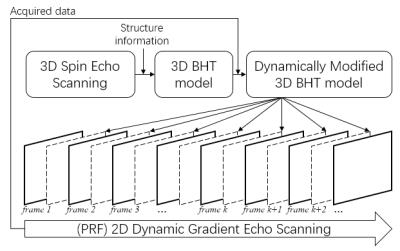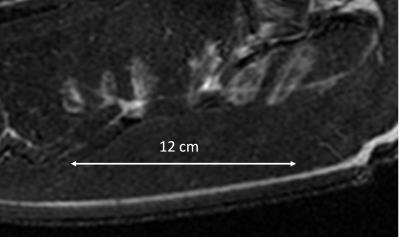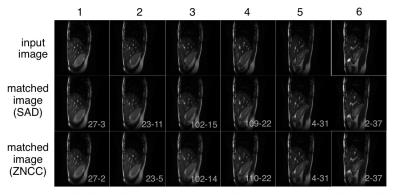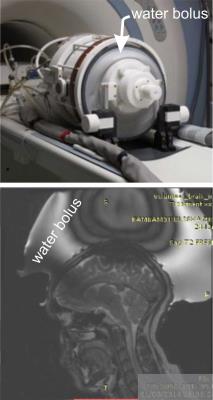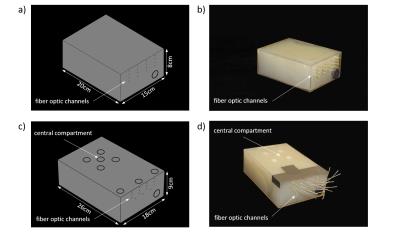Interventional Non-Thermal
Electronic Poster
Interventional MRI
Thursday, 27 April 2017
| Exhibition Hall |
14:00 - 15:00 |
| |
|
Computer # |
|
5537.
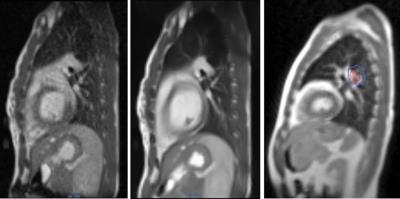 |
1 |
Low-field cardiac MRI for cardiac radiosurgery using an integrated MRI-guided radiotherapy system 
H Michael Gach, Roger Nana, Clifford Robinson, Philip Cuculich, Rojano Kashani, Jeffrey Bradley, Michael Roach, James Dempsey, Sasa Mutic, Olga Green
Integrated MRI-guided radiotherapy (MRIgRT) systems perform simultaneous MRI acquisitions during radiation therapy to optimize the accuracy of dose delivery. Cardiac radiosurgery using stereotactic body radiation therapy (SBRT) is a promising new treatment option for cardiac arrhythmias. We imaged the heart with a novel ungated radial TrueFISP sequence on a 0.35 T MRIgRT system. The sequence is being developed for next generation SBRT. Image artifacts associated with the sequence were measured using a Medtronic implantable cardiac defibrillator (ICD) in hydrogel and extended 13 cm from its center. Thus, artifacts should not preclude MRIgRT for most patients with ICDs.
|
|
5538.
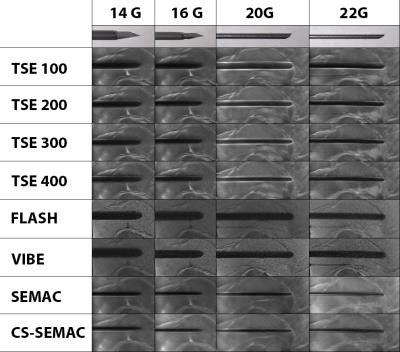 |
2 |
Interventional MRI at 3T: Compressed Sensing SEMAC for Improved Needle Visualization - permission withheld
Jan Fritz, Wesley Gilson, Christoph Forman, Esther Ratihel, Mathias Nittka, Allan Belzberg
Interventional MR imaging at 3 Tesla benefits from high signal and affords visualization and subsequent targeting of submillimeter structures, but needle artifacts may be exaggerated. Optimized fast gradient echo- and turbo spin echo-based pulse sequences minimize in-plane signal displacement, but through-plane artifacts remain. Compressed Sensing Slice-Encoding Metal Artifact Correction (SEMAC) MRI has the ability to minimize through-plane displacement, and thus holds promise to improve the accuracy of device localization. We demonstrate the clinical feasibility of Compressed Sensing SEMAC TSE for interventional MR imaging at 3 Tesla and visualization of the needle artifact with high accuracy.
|
|
5539.
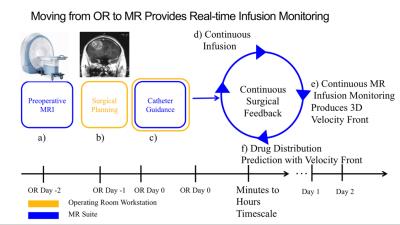 |
3 |
Controlling Brain Infusion Distributions: Moving from Surgical Planning to Real-Time MR Guidance 
Martin Brady, Raghu Raghavan, Andrew Alexander, Walter Block
The hetergeneity of the brain makes designing a desired end drug distribution through pressurized catheters difficult. We present a method to utilize real-time MR monitoring of a co-infused Gd tracer during initial stages of the infusion to derive a real-time 3D estimate of the velocity front. We also describe a new algorithm that uses the velocity front to provide surgical feedback on the likely final infusion distribution.
|
|
5556.
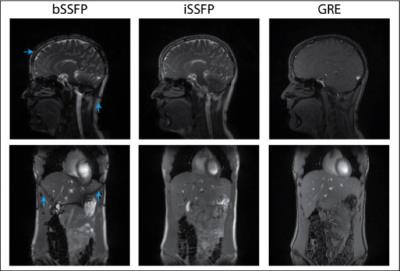 |
20 |
Quantitative Image Analysis of Real-Time Golden Angle Radial iSSFP for Interventional MRI 
Samantha Mikaiel, Thomas Martin, Kyunghyun Sung, Holden Wu
Real-time visualization is crucial to the success of MRI-guided minimally invasive cancer interventions. We have developed golden-angle (GA) ordered radial integrated-SSFP (iSSFP), which can suppress banding artifacts associated with bSSFP while maintaining similar T2/T1 contrast. In this work, we further analyze the tissue contrast as well as passive visualization of interventional needles using GA radial iSSFP. In volunteer scans, we verify that GA radial iSSFP achieves T2/T1 tissue contrast similar to bSSFP while suppressing banding artifacts. With phantom scans we show that iSSFP reduced the size of the needle-induced signal void, versus that seen on bSSFP. These advantages of GA Radial iSSFP show its potential for improving real-time MRI-guided interventions.
|
|
5540.
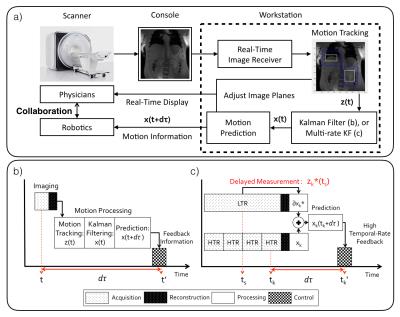 |
4 |
Real-Time Motion Prediction for Feedback Control of MRI-Guided Interventions 
Xinzhou Li, Samantha Mikaiel, James Simonelli, Yu-Hsiu Lee, Tsu-Chin Tsao, Holden H. Wu
MRI is capable of providing flexible soft tissue contrast and real-time guidance of interventions. Real-time information about the motion of tissues and devices is essential to provide feedback for physician and robotic control of MRI-guided interventions. In this work, a new motion prediction algorithm using MRI-based motion tracking and multi-rate Kalman filtering is proposed to provide accurate and real-time motion information. Experiments and simulations show that Kalman filtering with expectation maximization training and multi-rate data fusion is able to achieve low motion prediction error. This new algorithm has potential in providing real-time feedback information for MRI-guided interventions.
|
|
5541.
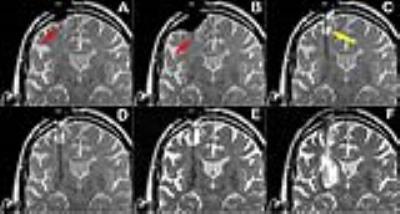 |
5 |
Hemorrhage Events during MR Guided DBS Implantations 
Alastair Martin, Philip Starr, Jill Ostrem, Paul Larson
MR guidance is increasingly being used to implant DBS electrodes. The technique is extremely accurate and permits patients to be under general anesthesia during the procedure. The incidence of complications during these procedures, however, has not been established. We report on the incidence of hemorrhagic events during 231 surgical procedures (374 electrodes implanted). The ability to detect hemorrhage intra-operatively is demonstrated and factors contributing to hemorrhage incidence are identified. Total hemorrhage rates and symptomatic hemorrhage rates were found to be 2.4%/electrode implanted and 1.1%/electrode implanted respectively, which is comparable to conventional surgical approaches for DBS implantation.
|
|
5542.
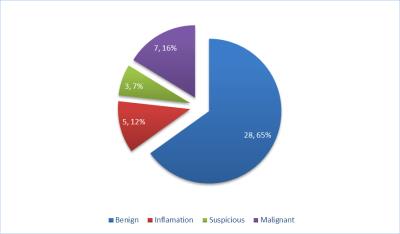 |
6 |
Unseen Clinically Significant Prostate Cancer on 3T Multiparametric MRI Challenging Screening and Focal Therapy: An In-bore MRI-Guided Biopsy Study of MRI Negative Areas 
Kareem Elfatairy, Christopher Filson, Omer Kucuk, Peter Rossi, Viraj Master, Sherif Nour
The use of multiparametric MRI for prostate cancer screening is challenged by the potential missing of clinically significant cancer in areas with no visible abnormalities. We randomly biopsied areas with no visible targets under direct MRI guidance. Out of 43 biopsied areas, negative predictive value for clinically significant cancers was 90.7% suggesting a very low potential for harboring clinically significant cancers and supporting the use of mpMRI in cancer screening and active surveillance. An extended biopsy approach including sampling of areas without visible MRI abnormalities may still need to be considered prior to focal therapy.
|
|
5543.
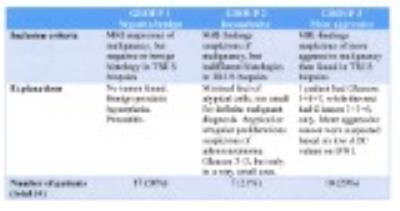 |
7 |
The role of in-bore MR-guided prostate biopsies in patients With discrepancy between MRI findings and TRUS biopsies 
Sverre Langørgen, Brage Krüger-Stokke, Øystein Størkersen, May-Britt Tessem, Helena Bertilsson, Tone Bathen, Kirsten Selnæs
A retrospecive review of 34 patients who had been to former TRUS guided prostate biopsies, where there was a discrepancy between MRI reported tumor suspicious findings and histology. They were re-biopsied with MRGB. We could verify cancer in 14 of 24 patients with former negative or benign histology. We also upgraded 7 out of 10 patients from low-grade to intermidiate or high-grade cancer. In addition to finding former unknown cancers, we also found that the urologists settled with benign diagnoses from MRGB. They then decided to end investigations in these patients.
|
|
5544.
 |
8 |
Inline Adaptive Spiral Off-Resonance Correction for MRI-guided interventions 
Matthew Restivo, Michael Hansen, Hui Xue, Adrienne Campbell-Washburn
Spiral imaging is appealing for MRI-guided interventions due to the need for high frame rate dynamic imaging and low RF power sequences to reduce RF-induced heating in metallic guidewires. Unfortunately, spiral images are susceptible to image distortions due to off-resonance which must be corrected. In this work, we implement a real-time interactive spiral sequence and a fast reconstruction in the Gadgetron that performs inline off-resonance correction that adapts to slice position and orientation changes. We show the effectiveness of our correction in both phantom and in-vivo volunteer images with reconstruction times that are approaching real-time.
|
 |
5545.
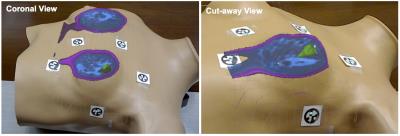 |
9 |
MR-Guided Mixed-Reality For Surgical Planning: Set-Up and Perceptual Accuracy 
Subashini Srinivasan, Amanda Wheeler, Brian Hargreaves, Bruce Daniel
Microsoft HoloLens provides the ability to visualize 3D holograms of preoperative MRI in addition to the physical environment. In this work we have developed a HoloLens application that aligns these preoperative holograms to the patient. The accuracy of perceiving these holograms was evaluated by presenting different shapes of holograms in random locations and comparing their positions to ground truth. The current set-up enables visualization and perception of holograms with a margin tolerance of < 6 mm.
|
|
5546.
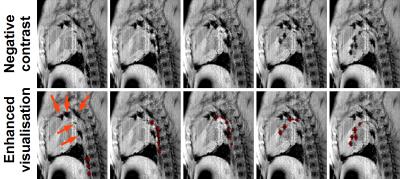 |
10 |
Advanced Passive Tracking and Visualization of MR-Compatible Diagnostic Electrophysiology Catheter 
Sébastien Roujol, Radhouene Neji, Henry Chubb, John Silberbauer, Tom Lloyd, Thomas Pohl, Rainer Schneider, Nick Kampa, James Harrison, Steven Williams, Rahul Mukherjee, Louisa O'Neill, John Whitaker, Matthew Wright, Tobias Schaeffter, Mark O'Neill, Reza Razavi
MRI shows promise for the guidance of electrophysiology (EP) procedures. MR-guided EP procedures require reliable catheter tracking capabilities. Passive catheter tracking enable positive or negative contrast visualization of the catheter in the MR-images using for example integrated ferromagnetic/paramagnetic materials or contrast agent. Positive contrast visualization remains challenging and often sensitive to imaging/post-processing parameters. Negative contrast techniques remain associated with confounding factors (i.e. any other signal void) which complicate visual catheter tracking. In this study, we sought to develop and evaluate a novel framework for passive catheter tracking with negative contrast combined with automatic tracking and enhanced visualization of the catheter.
|
|
5547.
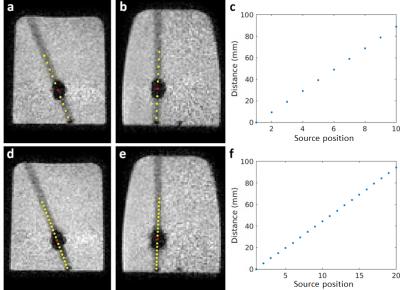 |
11 |
Simultaneous MR imaging and control of an MR compatible afterloader: feasibility of real-time HDR brachytherapy source tracking 
Ellis Beld, Marinus A. Moerland, Jeroen Schuurman , Frank Zijlstra, Max A. Viergever, Jan .J.W. Lagendijk, Peter R. Seevinck
For MR-guided high-dose-rate (HDR) brachytherapy, an MR-compatible afterloader was developed, required for real-time HDR brachytherapy source tracking. This afterloader should be able to function well close to the MRI scanner. The functioning of both the MR-compatible afterloader and the MRI scanner, while operating simultaneously, was investigated. Source localization was performed by a phase-only cross correlation localization method. The results demonstrate that the afterloader was able to send the source to predefined source positions, while simultaneously performing MR imaging. Combined with high-temporal resolution imaging and fast reconstruction/post-processing, this study shows the feasibility of real-time source tracking for MR-guided HDR brachytherapy.
|
|
5548.
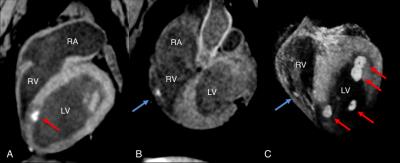 |
12 |
Non-contrast-enhanced imaging of RF ablation lesions in the heart 
Michael Guttman, Susumu Tao, Aravindan Kolandaivelu, Sarah Fink, Henry Halperin, Daniel Herzka
Non-contrast-enhanced T1-weighted imaging has been demonstrated to be an effective technique for visualization of acute RF ablation lesions in the heart. Current practice does not include any soft tissue visualization, which could lead to gaps or incomplete ablations and possible recurrence of symptoms. We propose a T1-weighted sequence with long TI to increase contrast between normal and ablated myocardium. Images are presented demonstrating the technique after ablations in the ventricles, left atrium and pulmonary vein.
|
|
5549.
 |
13 |
Using multi-stack simultaneous multi-slice bSSFP for improved motion characterization during MR-guided radiotherapy - permission withheld
Pim Borman, Clemens Bos, Sjoerd Crijns, Chrit Moonen, Bas Raaymakers, Rob Tijssen
Integrated MR-guided radiotherapy systems make it possible to monitor intra-fraction anatomy changes due to motion. A Simultaneous Multi-Slice (SMS) balanced SSFP sequence with interleaved stacks is used for dynamic imaging, where SMS is used to increase the spatial coverage without decreasing the frame rate. It is shown that SMS factors up to 4 are feasible without significant artifacts, for both orthogonal and parallel stacks.
|
|
5550.
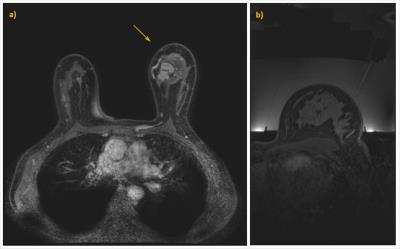 |
14 |
Improved planning of MR-HIFU therapy for breast cancer using image registration of pre- and per- treatment mDixon MRI 
Ieva Braškute, Clemens Bos, Roel Deckers, Lambertus Bartels
During Magnetic Resonance Imaging-guided High Intensity Focused Ultrasound (MR-HIFU) ablation of breast tumors, localization of the tumor during the treatment procedure is important for proper treatment planning. However, the use of a contrast agent during thermal ablation is preferably avoided for reasons of safety and practicality. We propose an image registration approach using pre-treatment eligibility CE and per-treatment non-CE breast MR scans, acquired with a dedicated mDixon-based tumor localization scan. We demonstrate the feasibility of our method in a volunteer study.
|
|
5551.
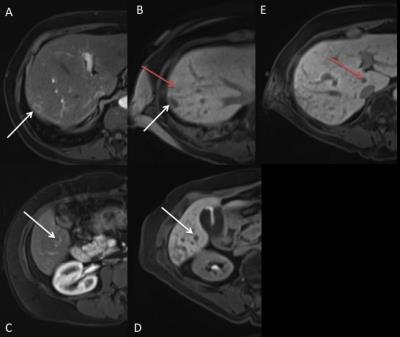 |
15 |
An Approach for Accurate Quantification of Hepatic Metastatic Burden during MRI-Guided Laser Ablation: Impact on Management Decisions in 41 Patients 
Danial Mir, Kareem Elfatairy, Debra Weber, Sherif Nour
Treatment of patients with metastatic liver disease requires accurate quantification of hepatic tumor burden and precise three dimensional localization. We demonstrate that intraprocedural MRI utilizing IV gadoxetate disodium (Eovist®) administration with controlled breath suspension under general anesthesia results in the detection additional hepatic metastatic deposits in 25% of cases, not appreciated on prior diagnostic imaging. In 88% of these cases this discovery led to a change in clinical management strategy that may have influenced patient outcomes.
|
|
5552.
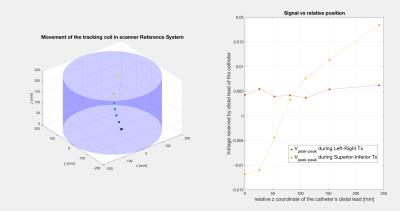 |
16 |
MRI-compatible Voltage Device Tracking (VDT) navigation: Simultaneous Tracking and imaging with high-gradient-duty-cycle sequences via complete removal of Gradient Induced Voltages. Initial results. 
Mikayel Dabaghyan, Jose de Arcos, Raymond Kwong, William Stevenson, Jeff Schweitzer, Greg Olson, Ehud Schmidt
Voltage Device Tracking (VDT), a method for catheter navigation, during MRI is explored. VDT utilizes multiple catheter electrodes that measure both the spatial location of the electrode and the ECG on the vessel wall (EGM) at that location. Electrode spatial-localization is performed by driving intermittent sinusoidal signals at kHz frequencies between surface electrodes, and measuring the signals received by the catheter. Large (>1V) signals (GIV), generated within the body by the MR gradients during a scan interfere with the much smaller (~10mV) tracking signals. We applied two approaches to remove GIVs, which allowed VDT visualization with <5% GIV contamination.
|
|
5553.
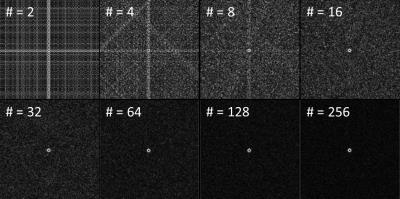 |
17 |
Investigation of Phase-only Cross Correlation (POCC) for Passive Marker Tracking with a limited Number of Projections 
Andreas Reichert, Axel Krafft, Michael Bock
In MR-guided interventions passive markers serve as needle guides for percutaneous biopsies and can be followed automatically to visualize the planned needle trajectory. This is achieved by tracking techniques which acquire two cross-sectional Cartesian tracking images of a cylindrical marker to determine the position information. We show that the implementation of radially undersampled tracking images might be used to reduce the duration of percutaneous needle procedures by about 80%.
|
|
5554.
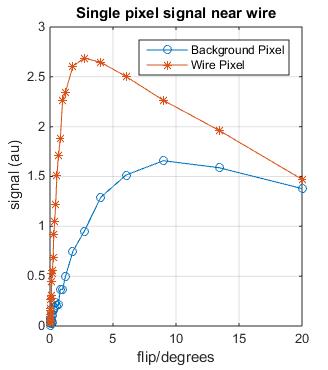 |
18 |
‘Pulse-acquire’ method for obtaining the guidewire coupling modes of a PTx transmit array 
Felipe Godinez, Joseph Hajnal, Greig Scott, Ronald Mooiweer, Shaihan Malik
A method for measuring relative coupling between elements of a parallel transmit (PTx) array and conductive structures such as guidewires or braided catheters. The method relies on strong local enhancement of B1 fields close to conductors due to induced currents. Data acquired from single pulse-acquire measurements using very low flip angles is hence dominated by these induced current contributions. Coupling matrices for N-channel arrays can therefore be estimated using only N pulses; it is demonstrated that these are similar to those obtained from dedicated current sensors.
|
|
5555.
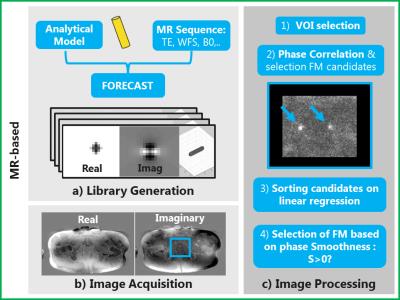 |
19 |
Clinical evaluation of automatic localization of prostate gold Fiducial Markers for MR-only Radiotherapy 
Matteo Maspero, Cornelis van den Berg, Frank Zijlstra, Hans de Boer, Gert Meijer, Max Viergever, Jan Lagendijk, Linda Kerkmeijer, Peter Seevinck
A novel approach aiming at automatic localization of gold Fiducial Markers (FMs) used in prostate radiotherapy to accurately perform patient positioning is presented and evaluated. The proposed method correctly detected 49/51 FMs in 17 patients when compared to FMs locations manually detected on MR. The spatial accuracy (median) and precision (STD) achieved were 0.2 mm, and 1.2 mm, respectively, when compared to relative FMs locations obtained with CT. When combined with a manual check, this approach could be a safe way to eliminate CT during radiotherapy planning, facilitating an MR-only workflow.
|
|
5557.
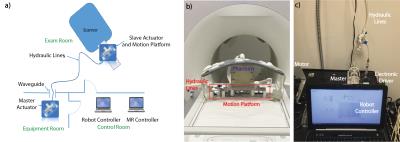 |
21 |
Hydrostatically Actuated MRI-Compatible Motion Platform for Dynamic MRI Research 
Samantha Mikaiel, James Simonelli, Yu-Hsiu Lee, Xinzhou Li, Kyunghyun Sung, Tsu-Chin Tsao, Holden Wu
Motion is one of the main challenges in MRI, including interventional MRI. While many dynamic imaging and motion compensation techniques have been created, comparisons and validation are difficult, since it is difficult to reproduce in vivo motion for multiple experiments. This work proposes the design and development of a 1 Degree-of-Freedom hydrostatically actuated MRI-compatible motion platform, which can reliably reproduce programmed motion for dynamic MRI experiments.
|
|
5558.
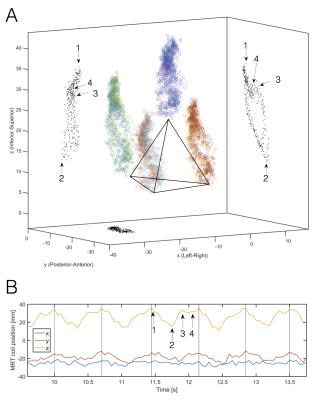 |
22 |
Motion-corrected high-resolution intra-cardiac imaging using MR-Tracking coils: reducing the effect of noise on motion estimation 
Jose de Arcos, Mikayel Dabaghyan, William Stevenson, Junichi Tokuda, Raymond Kwong, Ravi Seethmaraju, Jeff Schweitzer, Ehud Schmidt
We developed an intra-cardiac MRI (ICMRI) catheter to monitor heating during MRI-guided electro-physiological ablative procedures. ICMRI includes an imaging coil that expands within the cardiac chambers and a tetrahedral-shaped array of MR-tracking coils, intended to compensate for cardiac motion during the imaging process. In this study, we used real swine cardiac MR-tracking data, which may contain varying levels of positional uncertainty (noise), to develop algorithms that filter this noise, and thus do not distort the motional (translational/rotational) estimates, required for delivering non-blurred high-resolution intra-cardiac images. Our results show that submillimiter-error motion reconstruction is feasible under realistic levels of noise.
|
|
5559.
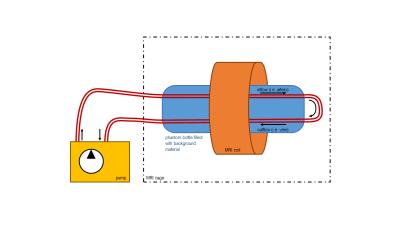 |
23 |
Feasibility study for implementing low-field MRI with SPIO nanoparticles for endovascular interventions – An alternative to X-ray guided techniques 
Jordy van Zandwijk, Frank Simonis, Robert Geelkerken, Robert Meerwaldt, Friso Heslinga, Bennie ten Haken
Low-field magnetic resonance imaging (lf-MRI) using super-paramagnetic iron-oxide (SPIO) nanoparticles as contrast agent seems to be a promising radiation free alternative to guide endovascular interventions in patients with critical limb ischemia (CLI). We propose an innovative workflow on how to deploy lf-MRI during such an intervention and investigate in phantoms the achievable contrast and resolution levels. The results showed that this combination of lf-MRI with SPIO contrast has potential to guide endovascular interventions, but that high quality pre-operative imaging might be required in deployment of this technique.
|
|
5560.
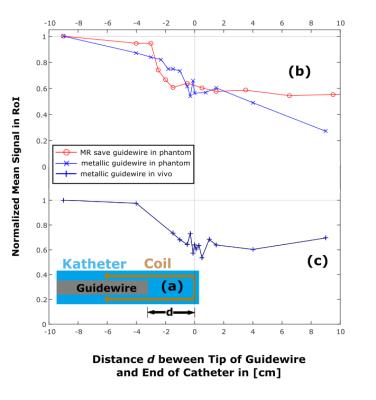 |
24 |
Of Active Catheters and Guidewires: How do Guidewires affect the Tracking Signal Intensity? 
Thomas Lottner, Ali Özen, Simon Reiss, Timo Heidt, Axel Krafft, Lisa Besch, Klaus Düring, Constantin von zur Mühlen, Michael Bock
Active tracking or profiling coils mounted on catheters provide high signal. Other devices in the vicinity can alter the signal acquired by the catheters. The effects of guidewires on the signal from actively tracked catheters were investigated in phantom and in vivo. A standard metallic guidewire and a MR safe guidewire with a passive marker were introduced through the catheter and tested for different positions at the tip. The signal loss was substantial for both guidewires. When the metallic guidewire passed through the catheter tip, the signal was unstable, whereas the MR safe guidewire did not cause any distortions.
|
|



